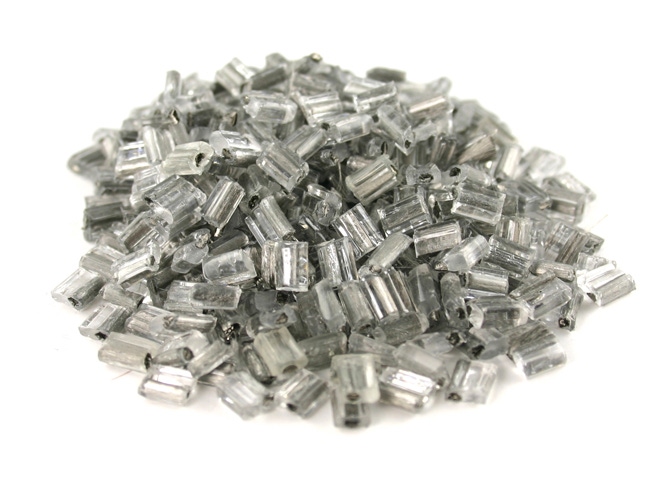Auto sector drives booming demand for EMI-shielding Electriplast conductive resins
While conductive resins have been around in some form for more than two decades, historically they were used primarily for static dissipation using carbon black or low levels of chopped stainless-steel fibers. Today there's an exciting new technology developed by Electriplast (Canton, MI), an Integral Technologies Co., that provides an alternative to electromagnetic interference (EMI) shielding using die-cast aluminum lining.
March 31, 2015

While conductive resins have been around in some form for more than two decades, historically they were used primarily for static dissipation using carbon black or low levels of chopped stainless-steel fibers. Today there's an exciting new technology developed by Electriplast (Canton, MI), an Integral Technologies Co., that provides an alternative to electromagnetic interference (EMI) shielding using die-cast aluminum lining.
 Electriplast has successfully formulated more than 80 blends covering thousands of applications, and is committed to discovering and developing lightweight conductive alternatives to metal. Electriplast has developed conductive resins that have the ruggedness and conductive properties of metal with the advantages of plastics, including the ability to mold the material in any size and shape required.
Electriplast has successfully formulated more than 80 blends covering thousands of applications, and is committed to discovering and developing lightweight conductive alternatives to metal. Electriplast has developed conductive resins that have the ruggedness and conductive properties of metal with the advantages of plastics, including the ability to mold the material in any size and shape required.
"Where we differentiate ourselves with our products is that we use long carbon fiber treated with nickel, which was a good move for us because carbon fiber prices have become commoditized," said Doug Balthauer, President of Integral Technologies Inc. The company uses a long-fiber extrusion process rather than the typical pultrusion process
The real differentiator for Electriplast is the company's ability to apply the material in the right formulation to suit application requirements. "Most of the market segments that we're entering into that have products requiring EMI shielding do not generally have people with the knowledge of conductive resins," Balthauer explained to PlasticsToday. "And many of the resin suppliers do not have all the knowledge required to exploit these in commercial applications. Our engineering team comes from an electrical applications background; how to apply the materials we develop is key to the company's success."
Balthauer said that the company, whose products have been in the R&D and patenting phases for just over 10 years, has intellectual property that is built around its manufacturing process and pellet design. "We have about 45 application patents that the material is built around, and another five patents around the manufacturing process and pellet design," he said. "We're now focusing on the commercialization of the materials."
Driving the increased demand for EMI resins, particularly in transportation, is the increase in electronics in vehicles. "As there are more and more electronics power and higher voltage requirements, the shielding requirements are getting [more stringent]," said Balthauer, noting, however, that when dealing with high-power electronics, cast aluminum is still the primary shielding.
"As the electrification of vehicles has become greater and greater, internal components are changing," Balthauer explained more fully. "Traditional gasoline cars are heavier today than they were 10 years ago, because of all the electronic and electrical add-ons consumers demand. For electric vehicles, the components required to move those drive trains are heavy and all require shielding. The hybrid and electric vehicles have an even bigger need for lightweighting than traditional gasoline vehicles. Electrical power boxes, inverters, and so forth that electric and hybrid vehicles require, which you don't see in traditional cars, are housed in cast aluminum boxes, which add weight."
Most aluminum die-cast shields have limitations to their benefits. Electriplast can provide further weight reduction and make the parts smaller because of mold and molding technologies, which can combine two or three individual metal parts into one injection molded part, depending on the design, and reduce costs, as well. "Typically speaking, we're coming in at about a 50 to 60% weight savings vs. aluminum shielding," Balthauer added.
Not every application can be converted from die-cast aluminum shielding to Electriplast, but most could be replaced with the company's material, concluded Balthauer. "An OEM could come to us with specs for shield effectiveness and we can design the material mixture," he explained. "We have yet to find an application in which our material fails to provide the shielding required. We can adjust the amount of carbon fiber and how carbon fibers are treated according to the shielding requirement. We can shield up to about what cast aluminum can for all real-world applications."
Electriplast comes in PBT with nickel-plated carbon fiber and PA66, PC/ABS, PC, PP and ABS in both nickel-plated carbon fiber and stainless-steel fiber.
"We are crossing into the commercial phase now, and looking for new opportunities and finding commercial partners as well as tooling partners. NPE was good for us," Balthauer noted. "The opportunities in conductive plastics are tremendous, as lightweighting becomes big in transportation. The automotive OEMs have spent a lot of time dealing with new designs and technology, such as electric and hybrid vehicles, so they didn't pay much attention to the materials. Now they feel they can look at materials, so there are a lot of opportunities."
About the Author(s)
You May Also Like




